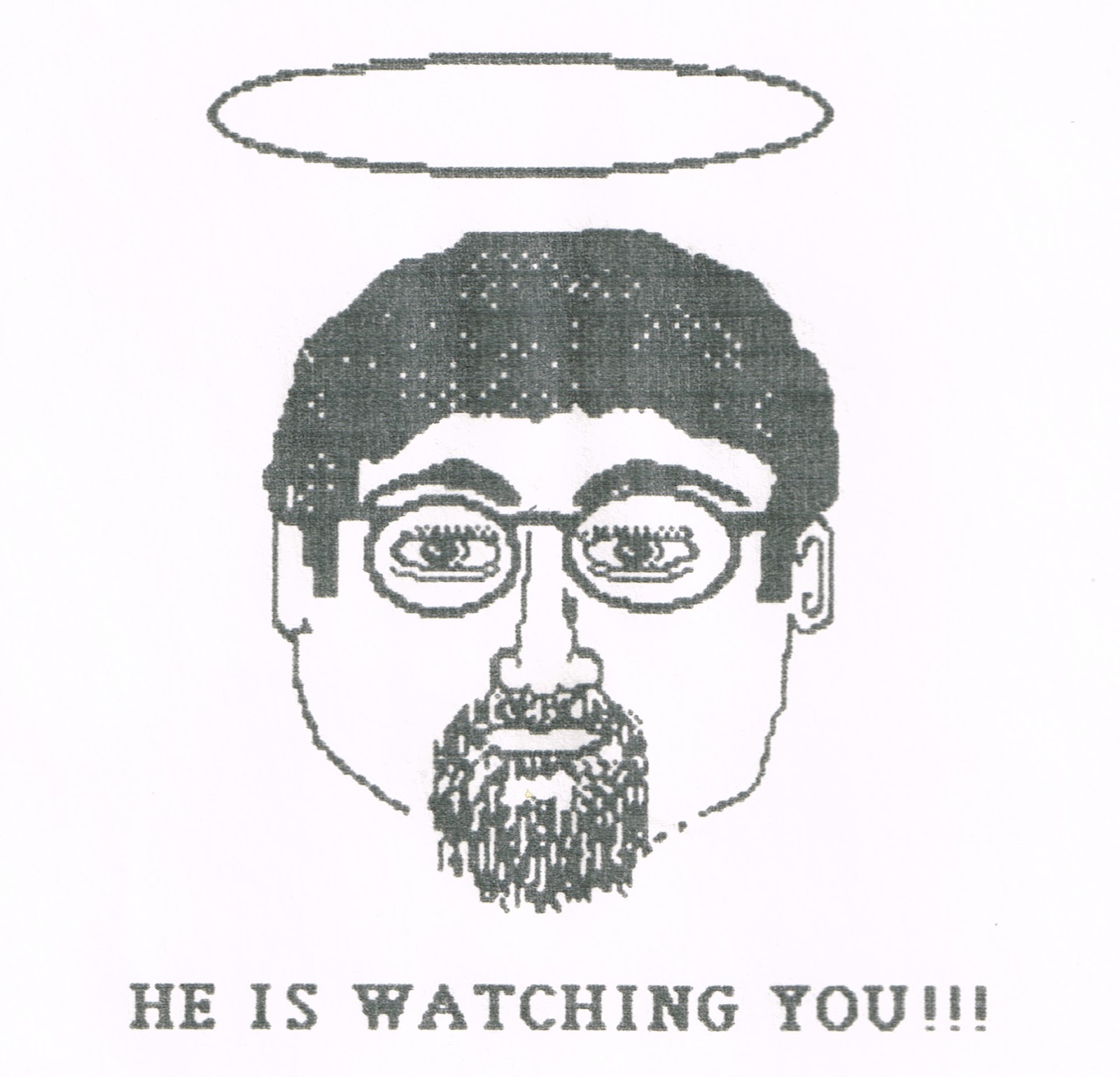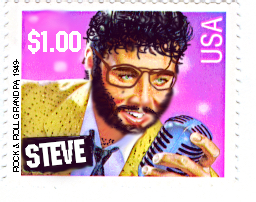Hey, Old Timer! A guide to how men age
November, 2022
Steven B. Zwickel
All right you men (hims/hes/you-guys). Sit down. Now stand up.
Those noises you hear—those crackling sounds—that’s old Father Time (he/him/That Bastard) telling you you are getting older.
No lie. If you plan to live to be 100 (not that unusual these days), you are probably close to the mid-point, which we used to call middle age. So listen up and this old geezer will tell you what you guys are in for.
[Disclaimer: I am not and never will be a medical professional. Everything written here can be discounted by someone who actually knows what they are talking about. Do not take anything if you think you may be pregnant, etc. etc.]
No one will tell you the truth about your aging body, but I am happy to share what I know (and what I can remember. Here goes.
Starting from the top. That would be the top of your head, which is getting closer to the floor. Your height is determined by the length of your spine. The spine consists of a line of some 23 bones (vertebrae) separated by small cushions called discs that are filled with a gel, which is similar to the stuff used in the insoles they sell for shoes. When you’re a lad, the discs are about ¼-inch thick. As you get older, that cushy gel filling becomes drier and stiffer, getting thinner over time. Thus, you lose height as you age, until you become a “little” old man (he/him/HEY YOU!)
What can be said about hair? If your DNA says “BALD”, then you will lose it (Doctors call this androgenic alopecia). If not, you’re damned lucky and I hate you. (And you guys with “distinguished-looking” gray hair; I hate you, too.) My forehead has grown and I miss my hair.
Any hair you lose from your head will show up in your ears and nose. This will make you look wildly unkempt and much less appealing to women. But who are we kidding? If you weren’t good looking when you were younger, you ain’t never gonna be good looking as a doddering old codger.
Your hearing—I said YOUR HEARING—will become less acute as you age. (Doctors call this Presbycusis.) You will notice that some frequencies (high-pitched) and voices (spouses) are harder to hear than others. You will almost certainly be a candidate for hearing aids, especially if you were a fan of popular music when you were younger.
Gravity is not your friend. Isaac Newton got it right. Every part of your body is being pulled down towards the center of the earth. Every part—nose, ears, and more. Look in the mirror. If you feel down, it's probably the force of gravity.
Your eyesight may or may not get worse as you age. Take care of your eyes or you will trip over the coffee table for sure.
Meanwhile, inside your brain, you will find that some axons and neurons are frequently “on break” and it may take a while for them to get back to you. Be patient. Unless you have serious problems, all that stuff you used to know in a flash is still there, it just takes the reference librarian longer to get back to you with the answer to important questions, like “What was the name of that hot-shot football player with the white shoes?” {Answer: Joe Namath} But, see, that’s what Wikipedia is for, right? It helps old guys answer important questions any time of the day or night. If you have serious memory problems, tell your doctor.
Do I need to tell you to take care of your teeth? If you haven’t done so by middle age, boy are you in for a shock when the dental bills come due! (Dentists call this second-home-on-a-lake fund). "Aging in men is associated with increased dental issues, such as enamel wear, tooth decay, gum recession, dry mouth, and tooth loss. These problems are exacerbated by factors unique to men, like potentially lower testosterone levels, increased participation in contact sports, and a greater tendency to neglect preventive dental care. To mitigate these issues, men should prioritize regular dental checkups, maintain thorough daily hygiene, stay hydrated, and discuss any persistent dry mouth with their doctor or dentist." <https://medlineplus.gov/ency/patientinstructions/000951.htm>
Your stomach and intestines will rebel against eating some of your favorite foods. Get revenge by taking antacids, anti-diarrhheal medicine, high-fiber foods, and simethicone (gas-relief agent). Never regret the foods you will have to give up or cut back on because it was worth every bite!
Male menopause is a real thing. <https://www.webmd.com/men/male-menopause> Mother Nature (she/her/God) does not want old guys starting families when they won’t be around to protect the young from predators or rap music. So she takes away your reproductive capacity, leaving you with, well, you know. But you will never make fun of a woman if you have to go through this, with the hot flashes, mood swings, and you can imagine the rest. Talk to an endocrinologist, if you can get an appointment and before you forget why you need to see one.
Your trips to the bathroom will increase, especially at night. That’s normal for most guys. If you have a “low flow” when you go, that could be a sign of something and you should tell your doctor.
Even if you started out with sturdy legs—powerful pillars of muscle and sinew—you may wake up one day to find you have raggedy chicken legs now defaced with bulging blue blood vessels. If they start to hurt, you have varicose veins and you should talk to a doctor. Your legs need to get out more, so get off your duff and walk around for a while. Reconsider when and where you choose to wear shorts.
Of course, the more you walk around, the more miles you are putting on your feet. As you get older, your feet, after years of being pounded into the ground, will start to swell. This swelling is common after a walk, run, or extended exercise, and most of the time the swelling goes down after a while. But after decades of walking (Harvard Med School estimates you will put 75,000 miles on your feet by age 50!), your feet will get flatter and wider and stay that way. If you put on weight since high school, that will also affect your feet. If you want comfortable shoes, you need to buy them ½ size larger every few years after you turn 50.
The shape of your toes and toenails may change as you get older. Nail clubbing is a condition that can affect the fingers or toes, in which the digits form a bulge at the end and the nail turns downward. Doctors call it Acropachy and it is treatable. Clubbing may be caused by disorders that affect the amount of oxygen in the blood (such as heart problems and lung diseases including cancer or infection). Other finger and toenail abnormalities are described at <https://medlineplus.gov/ency/article/003247.htm>. Take changes in your nails and cuticles seriously, since they can be a warning sign of cancer!
Going for a walk may also become a problem as you get older, because your sense of balance changes and, for many people, declines. This is called disequilibrium of aging and it happens because your balance systems—the inner ear (vestibular system), vision, and body awareness (proprioception), get weaker. This is one reason older adults are susceptible to falling. Balance problems can be caused by certain medications or medical conditions, by alcohol, or because of inner ear problems (A part of the inner ear called the labyrinth is responsible for balance. When the labyrinth becomes inflamed, you get labyrinthitis, causing vertigo and imbalance. Certain ear diseases and infections can lead to labyrinthitis). <https://www.nia.nih.gov/health/falls-and-falls-prevention/older-adults-and-balance-problems>
Other bizarre things may happen to you. Stay calm and be flexible.
- Sometimes you may need to switch to a different deodorant if the one you’ve been using since the Beatles played on Ed Sullivan no longer works. In addition to all the new wrinkles you will see on your face and neck, other changes may include dry, sometimes itchy, skin. If that’s not enough to depress you, the Mayo Clinic says, “Common skin changes that appear gradually as you age include age spots, freckles, discolored blotches, wrinkles, sallowness, roughness, very dry skin and leathery toughness. Some people develop scaly patches, skin tags, or bright red or purple raised bumps (cherry angiomas), which might be bothersome but are usually harmless.” <https://www.mayoclinic.org/healthy-lifestyle/adult-health/expert-answers/aging-skin-treatment/faq-20455139>
- You may find that you no longer sweat where you used to and that you do sweat in parts of your body that used to stay dry (Doctors call this hyperhidrosis). "Someone who takes medication for diabetes may find the drug causes them to sweat far more than they used to." <https://www.hyperhidrosiscumc.com/does-hyperhidrosis-go-away-with-age/> Do not use deodorant on your crotch! Try baby powder or corn starch.
- Dark spots that show up on your skin are called sunspots or "liver" spots. They often show up in areas that get a lot of sun. <https://www.mayoclinic.org/diseases-conditions/age-spots/symptoms-causes/syc-20355859> While they don't require medical care, you should be using sun screen whenever you go out in the sun. If you have been using a tanning bed, you are an idiot. UV rays cause melanoma, skin cancer, that will spread and kill you. Any spots that get darker or change shape should be seen by a doctor, because they may be cancerous.
- Your hair may go from oily to dry or the other way. Switch to a different shampoo and conditioner. Gotta take care of what little that bitch Mother Nature left on your pate.
- Your sleeping patterns will probably change. Aging early risers may find that they sleep later and night owls may discover they are not able to stay up for the end of the movie. "Sleep patterns tend to change as you age. Most people find that aging causes them to have a harder time falling asleep. They wake up more often during the night and earlier in the morning. Total sleep time stays the same or is slightly decreased (6.5 to 7 hours per night). It may be harder to fall asleep and you may spend more total time in bed. The transition between sleep and waking up is often abrupt, which makes older people feel like they are a lighter sleeper than when they were younger. Less time is spent in deep, dreamless sleep. Older people wake up an average of 3 or 4 times each night. They are also more aware of being awake. Older people wake up more often because they spend less time in deep sleep. Other causes include needing to get up and urinate (nocturia), anxiety, and discomfort or pain from long-term (chronic) illnesses." <https://medlineplus.gov/ency/article/004018.htm> The amount of time you need to spend in dreamland to feel alert the next day will change. Even if you haven’t done so since you were a toddler, you may need to take naps. That’s normal, because as we age we become lighter sleepers and the quality of sleep changes for the worse. It’s a problem if you have to get to work on time. Lucky for you, retirement is just around the corner, so screw the alarm clock.
- As you grow older, your senses of smell and taste can change, and certain foods don’t seem to be as flavorful as they used to be. <https://www.nia.nih.gov/health/teeth-and-mouth/how-smell-and-taste-change-you-age>
As you age, your sense of smell may fade. When you can’t smell, food may taste bland and it might be more difficult to tell if it has spoiled. You may experience trouble with cooking or even lose interest in eating. Long-term loss of smell can affect your mood and quality of life. The sense of smell declines with age, and loss of olfactory function is also an early symptom of neurodegenerative diseases such as Parkinson’s and Alzheimer’s.<https://www.nia.nih.gov/news/sense-smell-linked-speed-brain-loss-and-cognitive-decline>
Smell and taste are linked: Changes in smell or taste can also be a sign of a larger health problem. Brain injuries and some neurologic conditions such as dementia and Parkinson’s can also affect your sense of taste. Discuss any changes of taste with your doctor. {Added 14 Sept 2025}
Finally, as you get older you will understand more about how the world works. Your years of experience will have given you tons of knowledge about what needs to be done and how to get things done. Unfortunately, no one wants to hear what you have to say, old man.





























